The Oculus-powered Samsung Gear VR finally has a legit rival, in the upcoming Google Daydream View. There's still much we don't know about the latter, but we can compare the features and specs we're aware of right now, with the first real mobile VR showdown.
Android phone compatibility
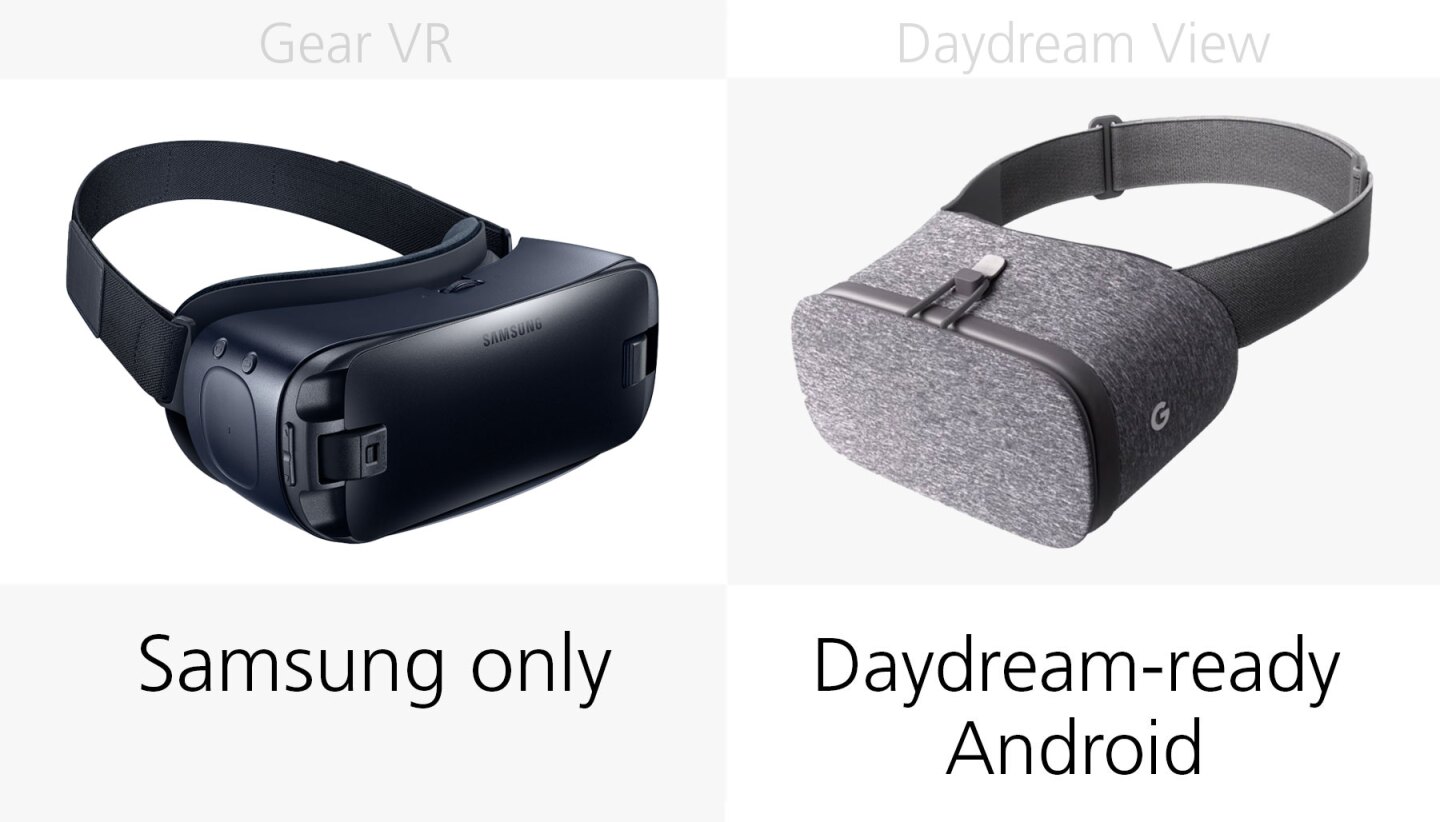
In the long run, Daydream headsets, like the View, should have the compatibility advantage. In a year or two, we'd expect just about every major Android flagship phone to be "Daydream-ready," meaning Google thinks they're up-to-snuff for sliding inside a VR headset.
At launch, though, there are only two official Daydream-ready phones: Google's own Pixel and Pixel XL. In the short term, Samsung has a big compatibility advantage – with all of the company's 2015-16 flagships (six phones in total) in the mix.
The Gear VR only plays nice with Samsung Galaxy flagships. It's always possible Samsung and Oculus will open that up to Android at large at some point, but we've yet to hear anything on that front.
After the damage done to the Galaxy brand from the exploding Note 7 debacle, will Gear VR have lost some of its luster too? Is this a prime opportunity for Google to step in? Time will tell.
iPhone compatibility

Neither headset works with iPhones. If Apple ever releases a mobile VR headset, it will likely leap to the head of the pack almost immediately, as far as adoption goes.
Build
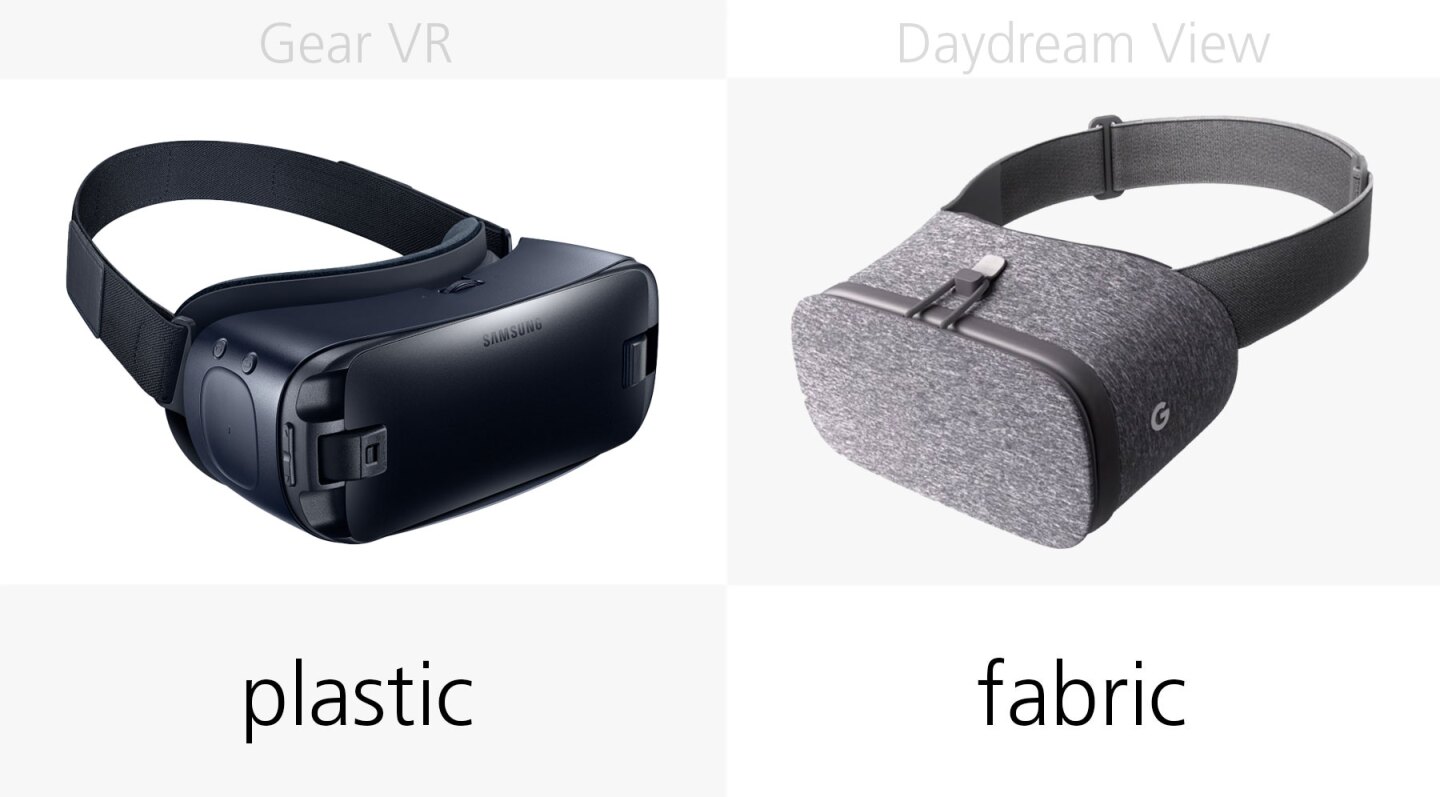
It isn't often you see a tech product where build materials are its killer feature, but that's the case with the ultra-sleek, fabric-covered Daydream View.
Weight

The Gear VR is 57 percent heavier, only accentuating View's sleek/light design. We never found the Gear's weight, though, to be anything to worry about.
Both measurements are without a phone inside, but note that the Gear gets a smidge lighter if you take the front cover off.
Colors
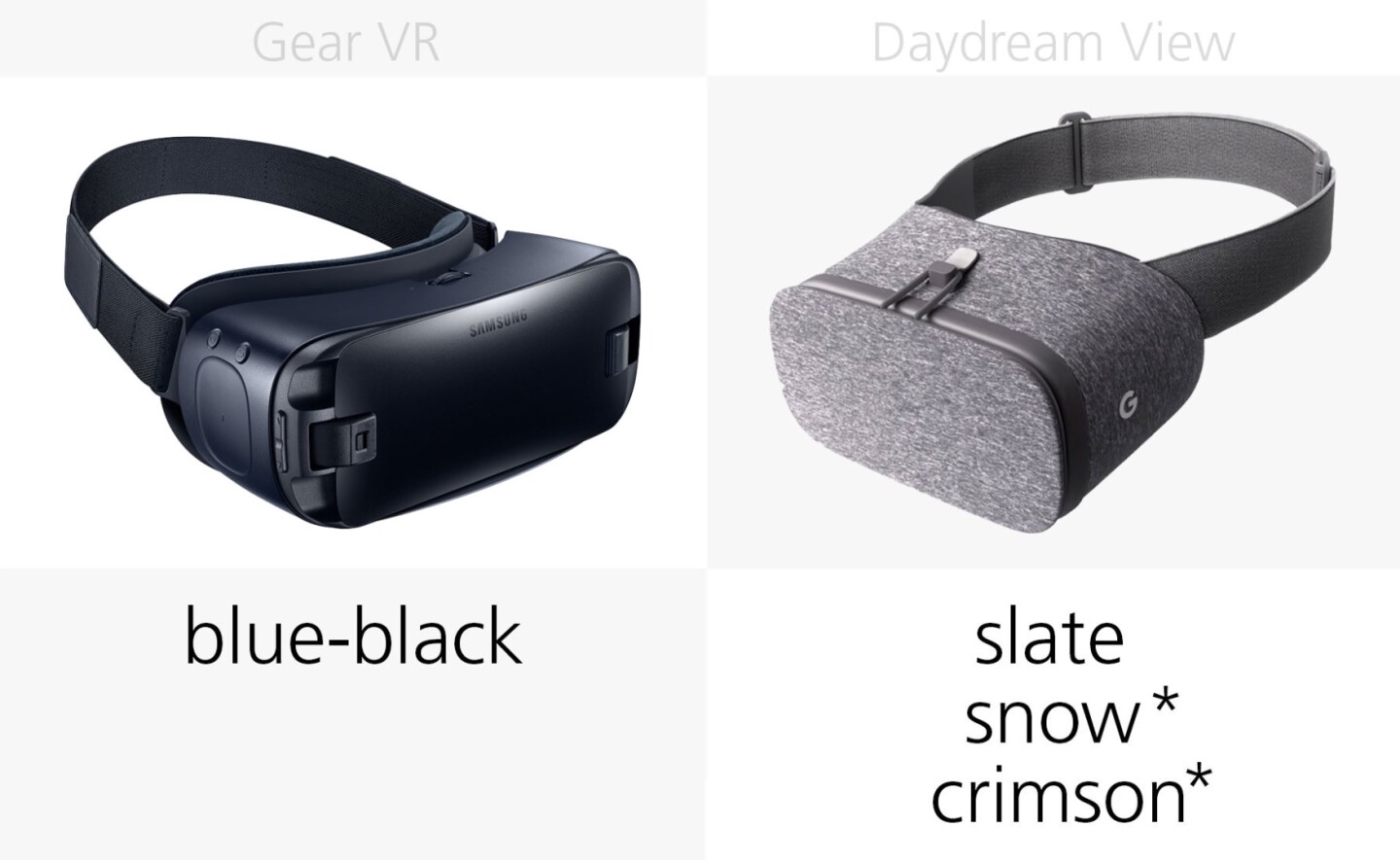
The slate-colored Daydream View (pictured) will be the only option at launch, but at some point later this year Google will offer the headset in two more hues.
Display resolution
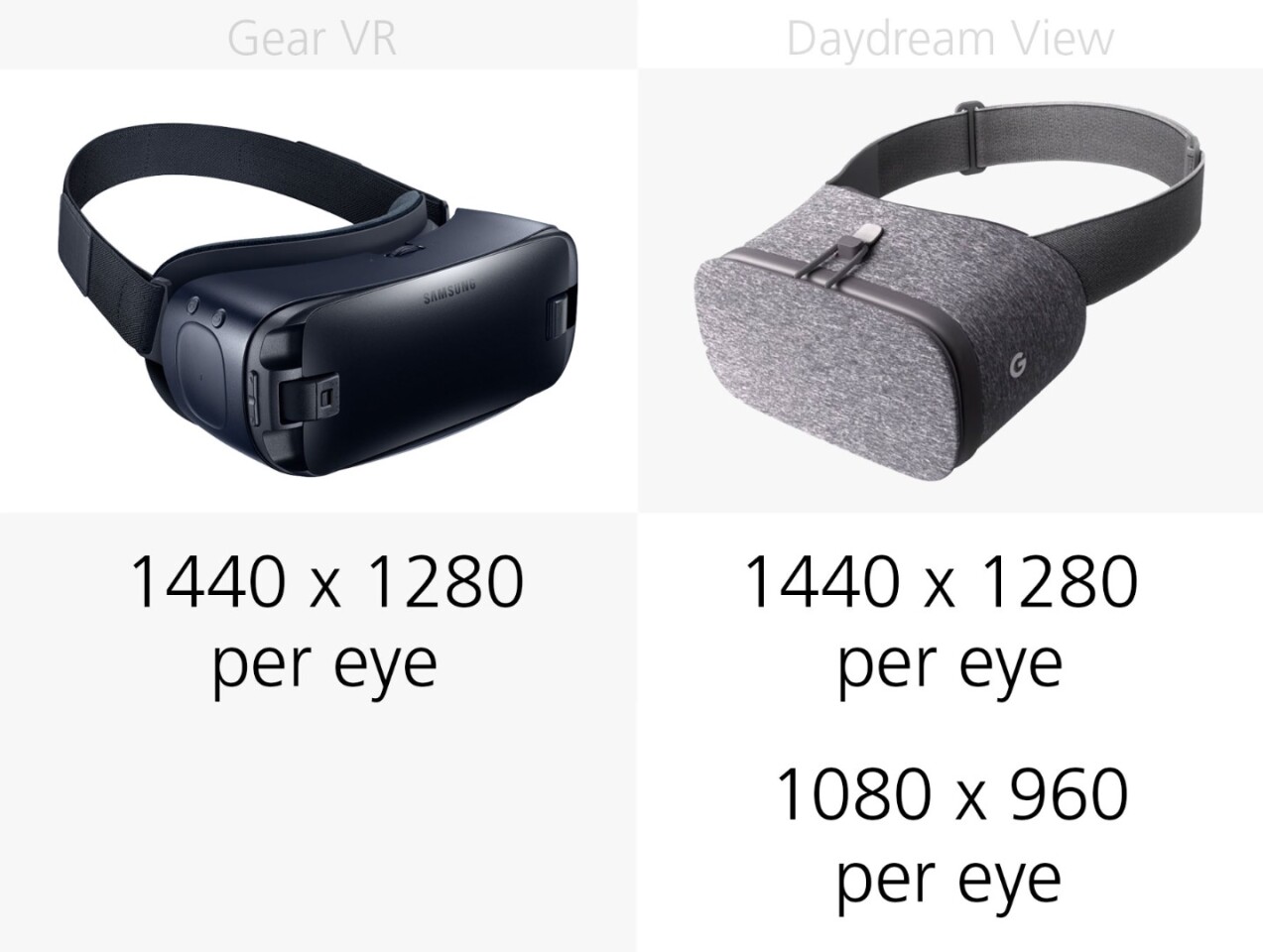
Display resolution, of course, comes from the phone inside. All of the Gear VR-ready Galaxy phones have ultra-high QHD resolution. Between the two Daydream-friendly phones at launch, one is QHD (Google Pixel XL) and the other a mere 1080p (Pixel), which won't look quite as crisp through the lenses.
Display type

AMOLED display panels are practically necessary for high-quality VR, due to their low persistence and deep blacks.
Field of view

Google hasn't released any field of view specs for Daydream View, but it should be lower than the Gear VR's (possibly by a wide margin).
In both headsets, the FOV will also be a little smaller if you use a phone with a smaller screen inside (Galaxy S7, S6, Pixel) as opposed to a phablet (Galaxy S7 edge, S6 edge+, Note 5, Pixel XL).
Motion controller
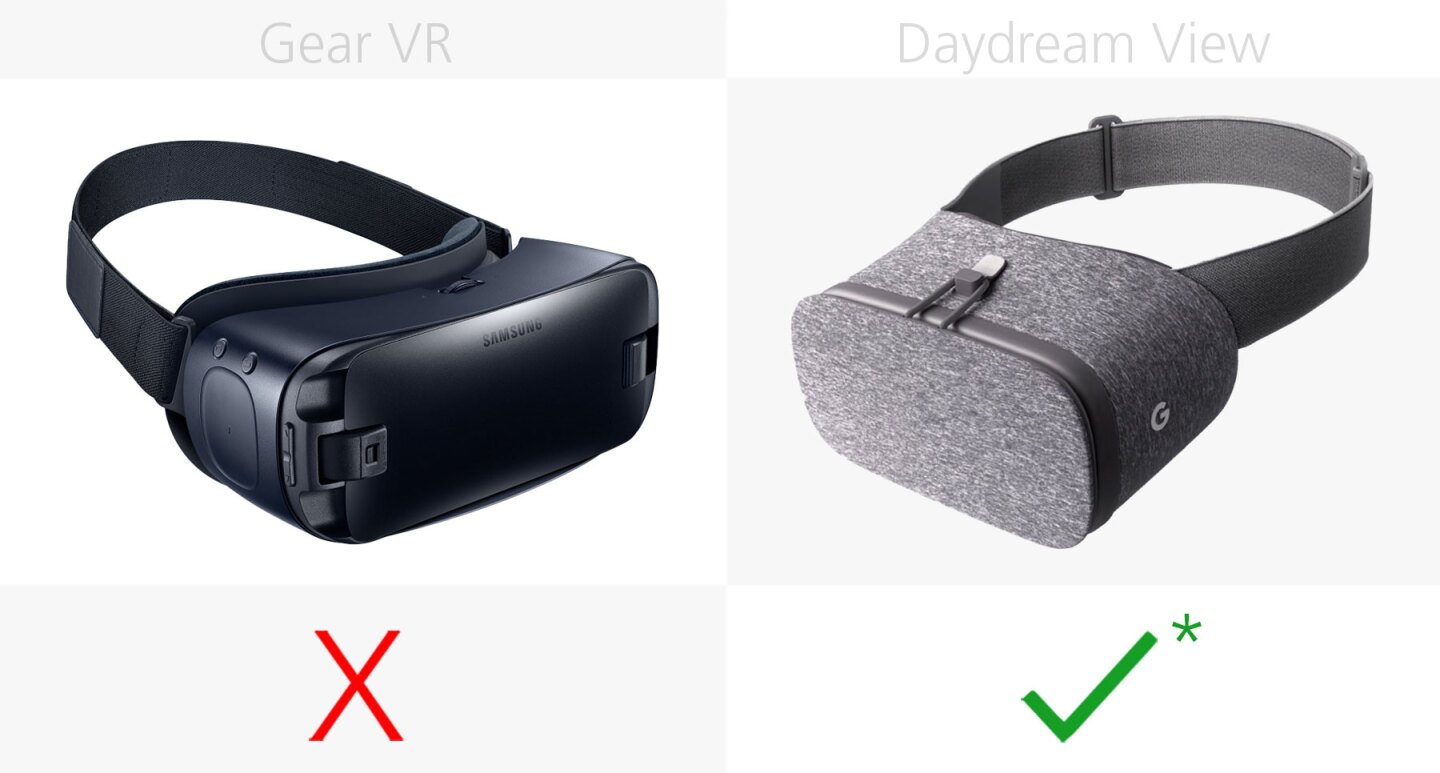
It's a far cry from Oculus Touch or the Vive's controllers, but Google is including a single motion-control remote with Daydream View. Without a pair of controllers, though, it's going to be less about making you feel like you have hands in the virtual worlds, and more about simple actions like pointing a virtual gun or magic wand, or menu navigation.
Gamepad support
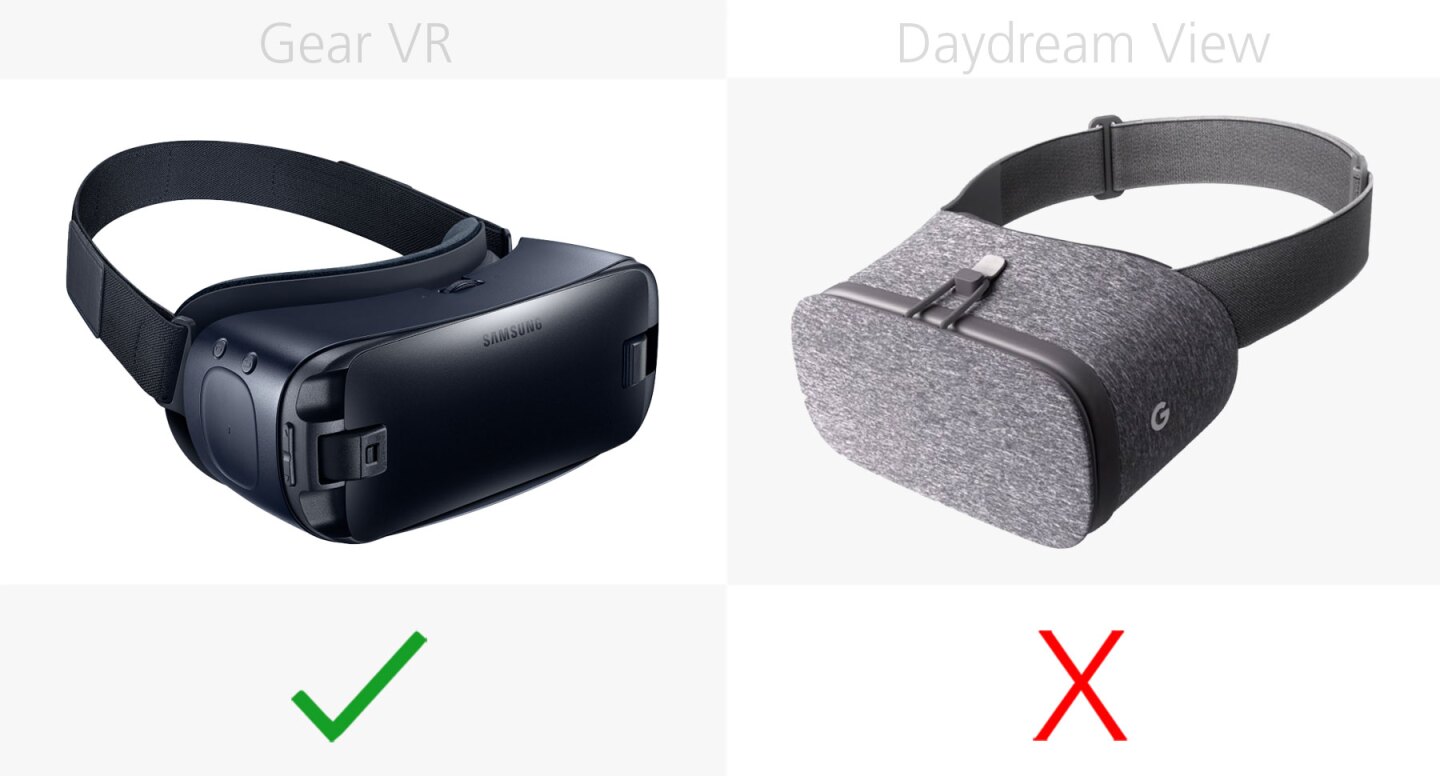
Google is pushing its remote control as the primary input for Daydream View, and a Google rep tells us Daydream games won't support full gamepads as an alternative.
The Gear VR does support a Bluetooth gamepad (sold separately).
Touchpad
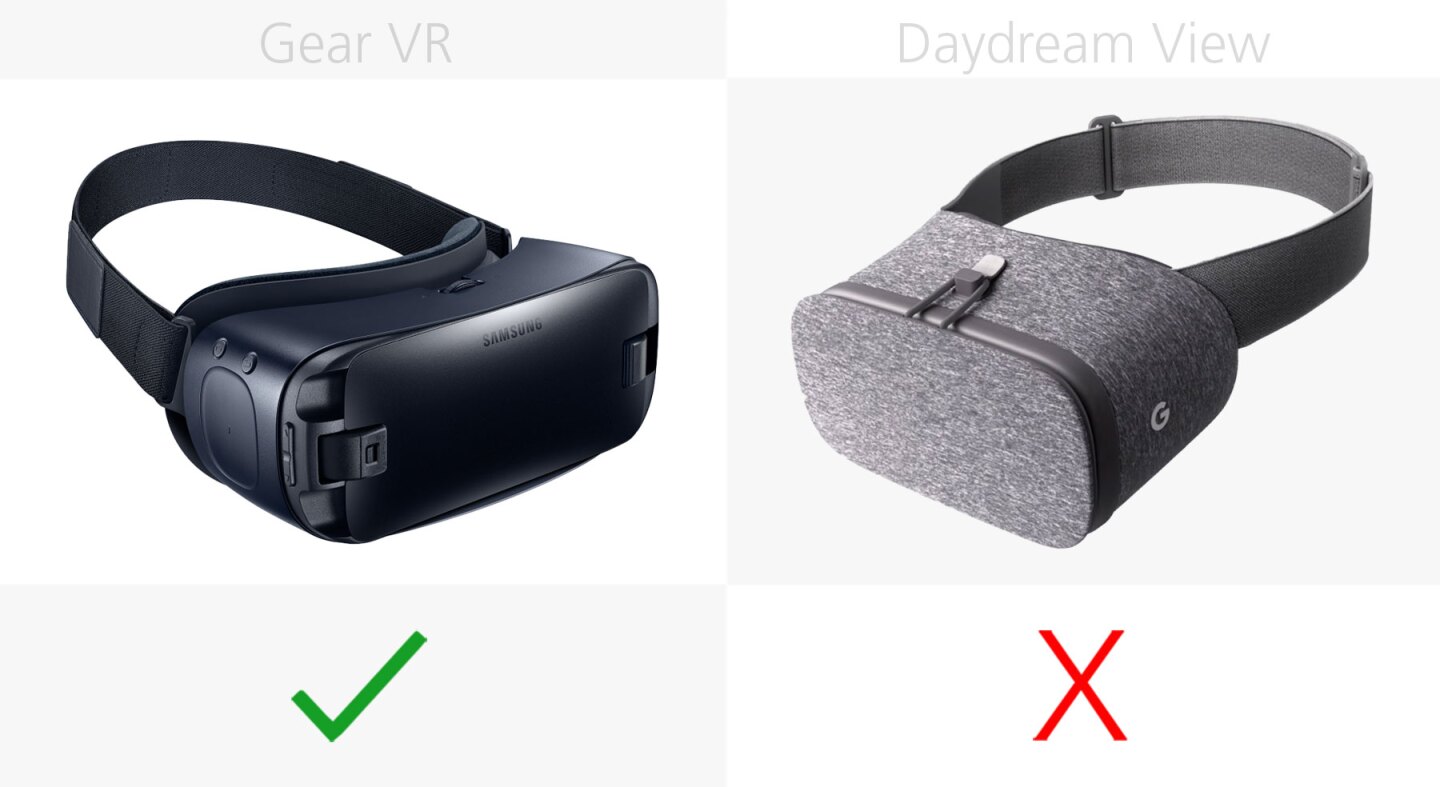
The Gear VR also has a touchpad on the right side of the headset, as an alternate control method in some of its simpler games.
Positional tracking

This is still mobile VR's biggest weakness, compared to PC-based stuff like the HTC Vive and Oculus Rift. Samsung's and Google's headsets only track head rotation, not neck-down movement of any kind. So when you move or lean your body, the virtual world moves or leans with you – a strange sensation that reminds you how entry-level today's mobile VR is.
Wireless
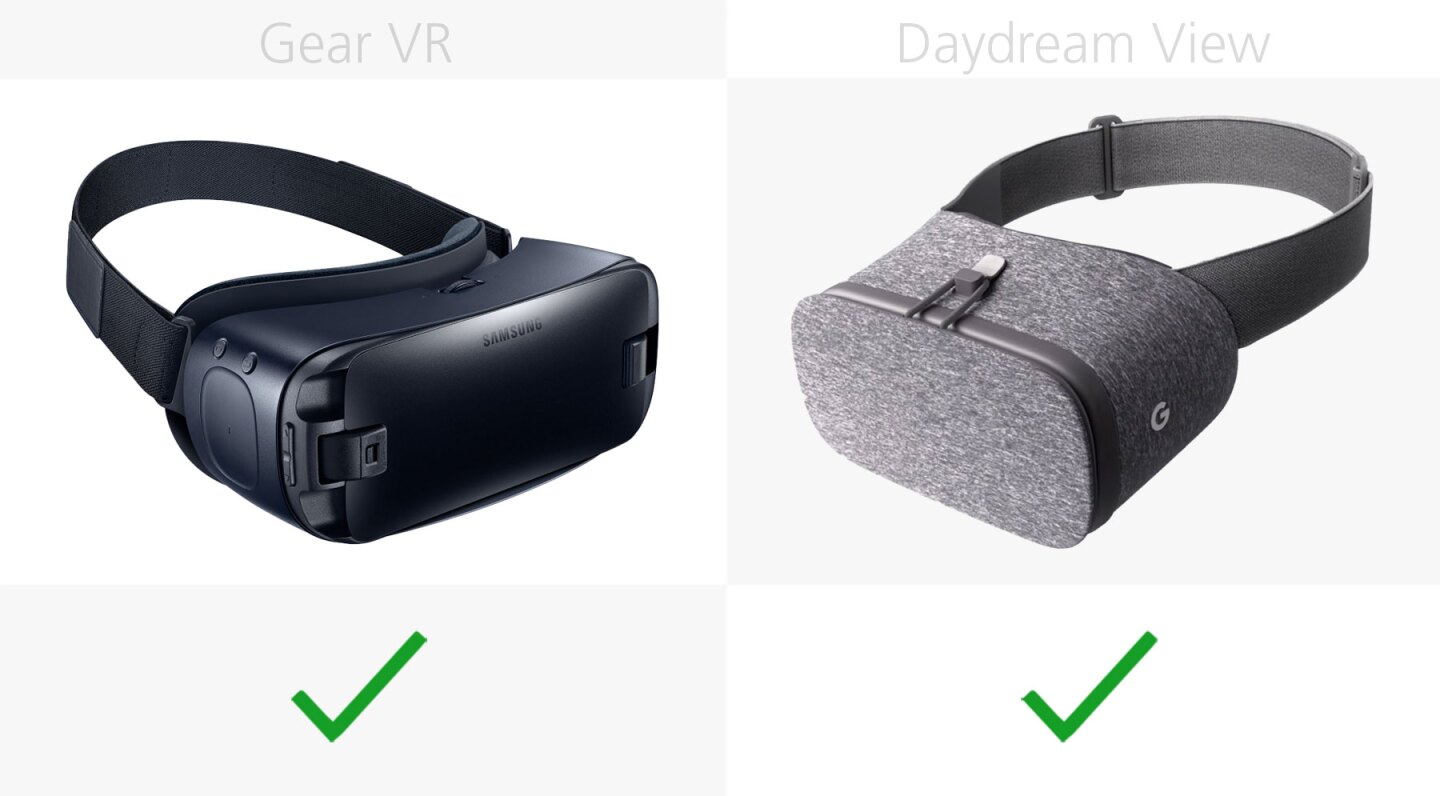
Conversely, this is mobile VR's biggest advantage over PC- and console-based virtual reality. Since it isn't connected to anything, pulling all its power from the smartphone living under its lid, it's completely wireless.
Ports

The latest Gear VR can switch between microUSB and USB-C, thanks to detachable adapters, but after the Note 7 recall there are no remaining compatible USB-C phones for the Gear (next year's Galaxy S8 will likely bring it back to relevance).
The phone doesn't have any electronic connection to Daydream View; the handset just rests inside the headset.
Focus adjustment
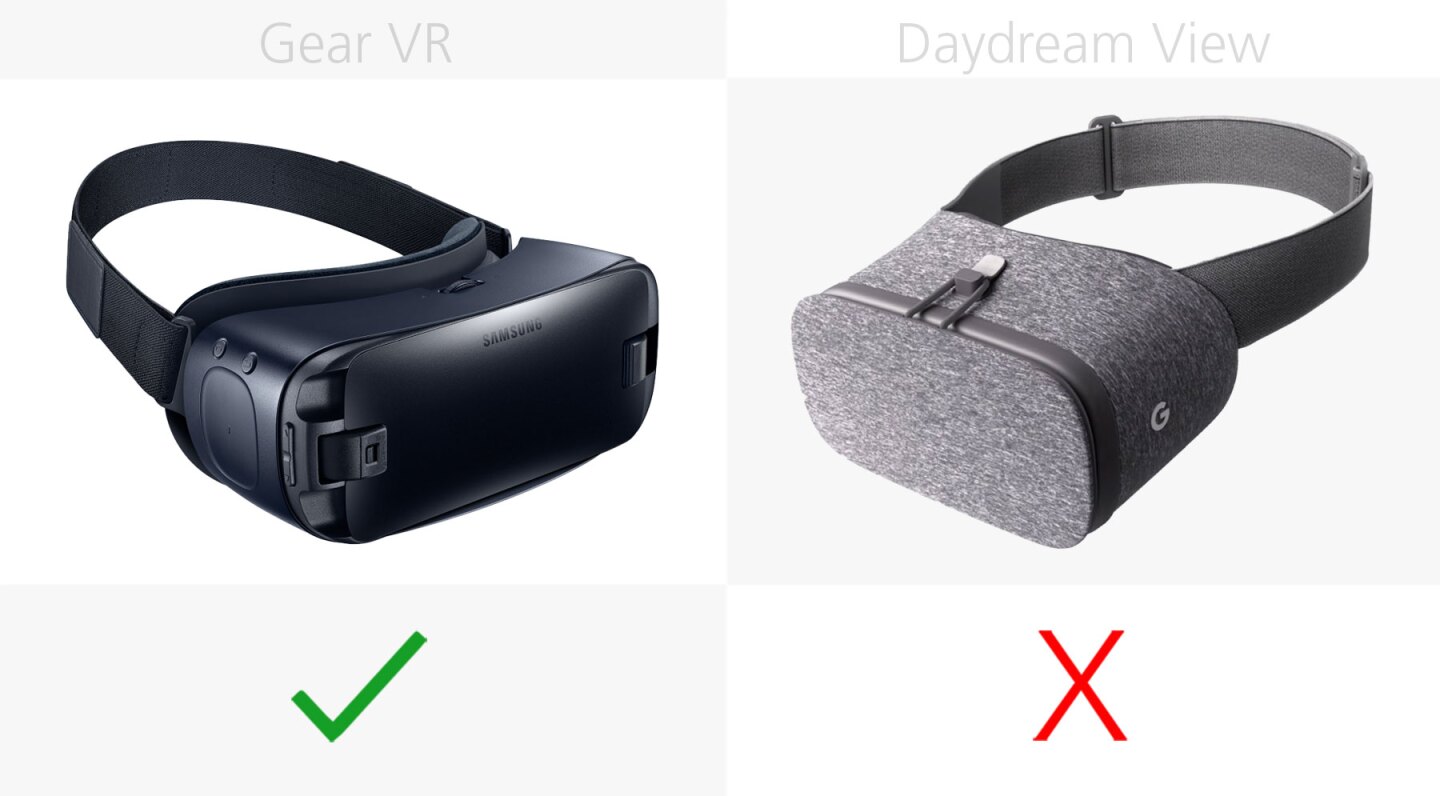
The Gear VR has a handy wheel on top that lets you tweak its focus to match your vision, not unlike a machine you'd get tested on at your local optometrist's office.
Glasses support
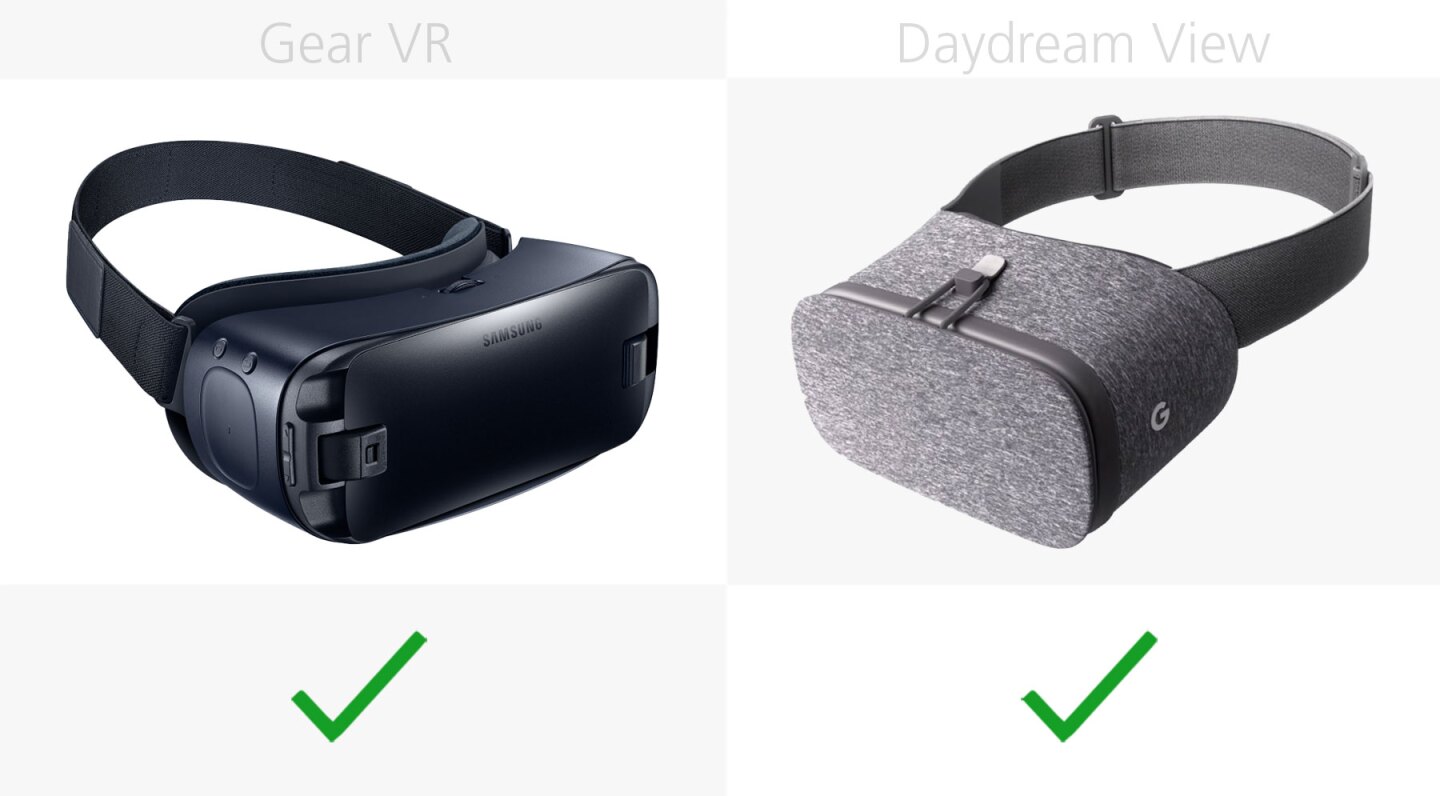
You can wear glasses underneath both headsets, but the Gear's focus wheel means specs-wearers can just take them off for use with Samsung's headset.
Software
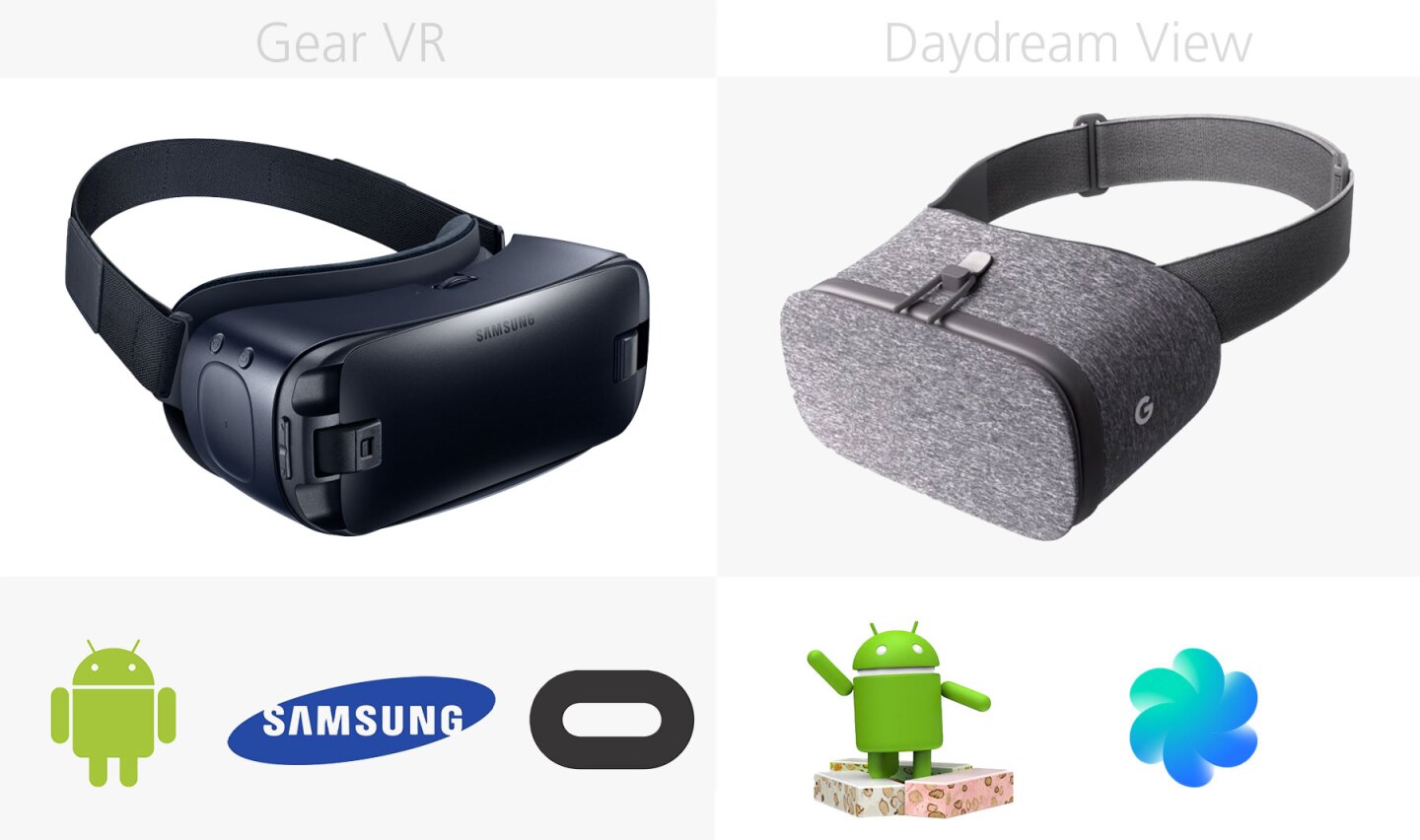
At least in the short term, this is the biggest thing Gear VR can hang its hat on. With help from Oculus and its legion of VR developers (the Gear VR gets content exclusively from the Oculus Store that pre-installs when you first use the headset), it has by far today's biggest and best selection of mobile virtual reality content.
Daydream requires Android Nougat. As far as content goes, it essentially inherits two years' worth of Google Cardboard apps and games – generally solid but not Oculus Store level – along with new stuff timed to launch alongside Google's consumer-friendly Daydream platform.
Release
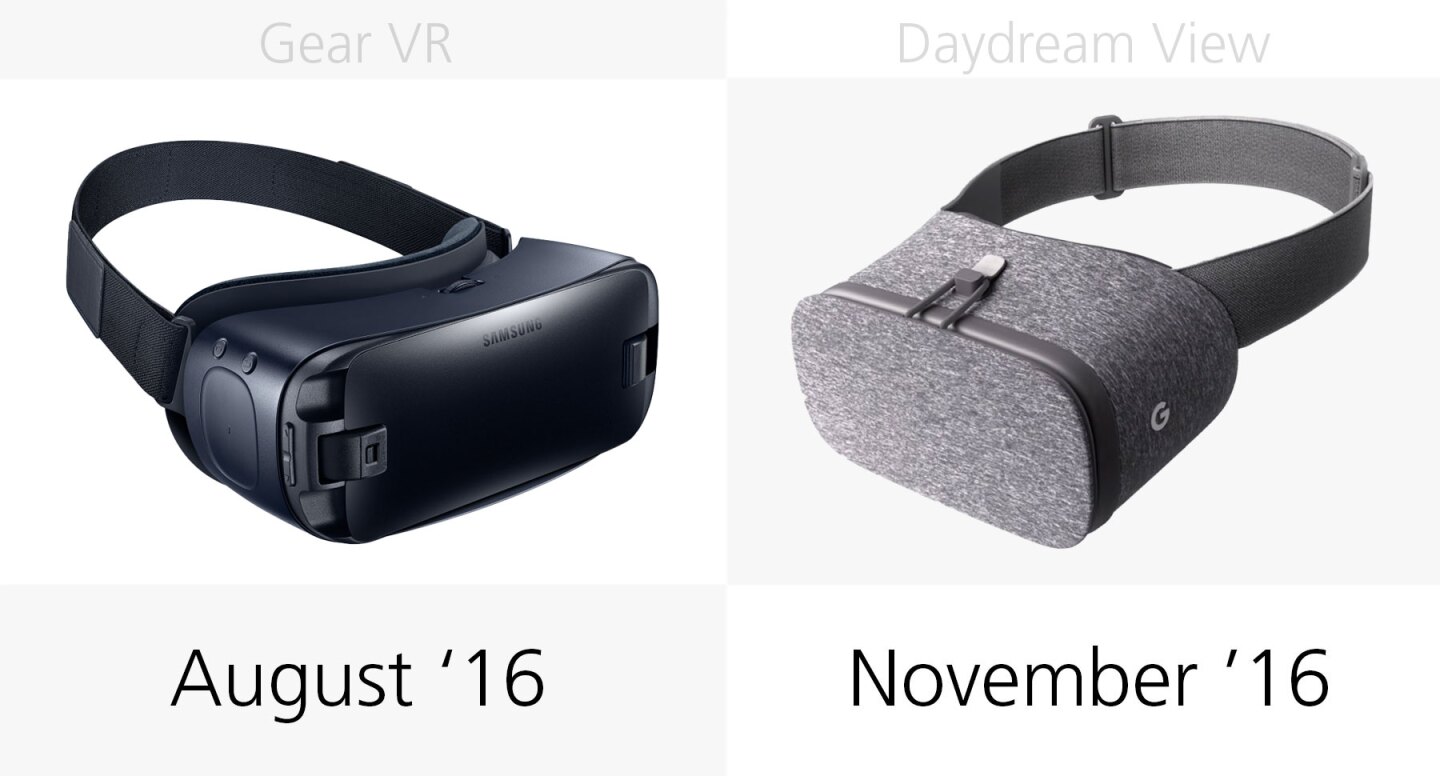
This latest version of the Gear VR launched alongside the ill-fated Note 7 in early August, but, with that phone going up in flames, all the same phones now work with the original Gear VR that launched in late 2015.
Daydream View started shipping in November.
Price
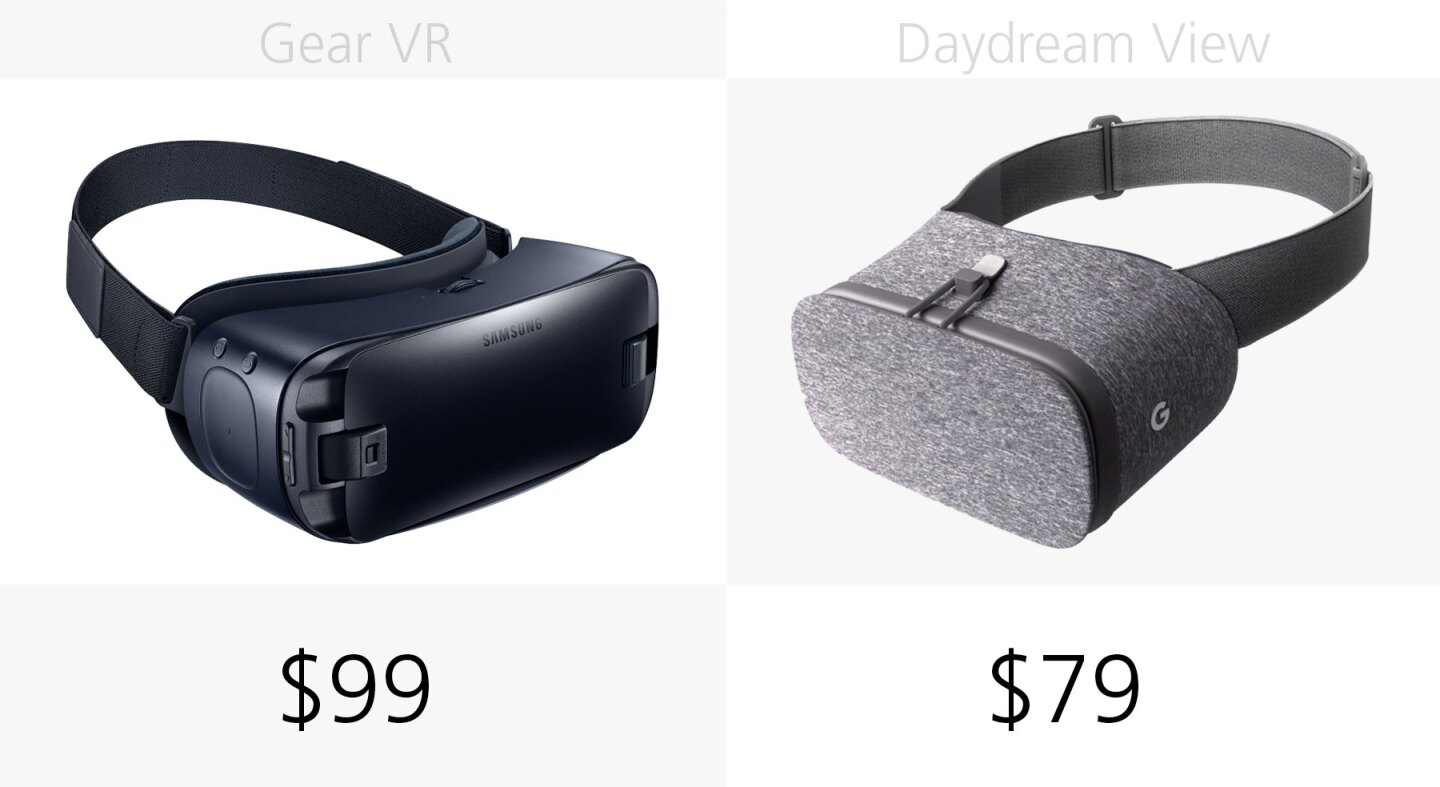
Daydream View is US$20 cheaper and also includes its nifty little remote. If you own a compatible Samsung phone and want to save some money, though, you can find last-gen Gear VR headsets for cheaper than the View.
For more, you can read New Atlas' full reviews of the latest Gear VR and Google Daydream View.
Correction: An earlier version of this article listed Daydream View as having a USB-C port, rather than being portless.























